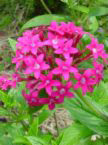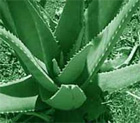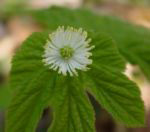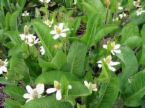|
Goldenseal |
Salves, Creams and Infused Oils Remedies |
Puncheon (Mullein) |
Infused Oils
If you know how to make tea you can make an infusion, it is the easiest way to prepare a herbal medicine at home. You use this method to prepare leaves, flowers and any soft part of a plant. Place1 teaspoon of the your dried herb or 3 three teaspoons of the fresh herb in a cup, and pour over 1 cup of freshly boiled water. Steep it 10 min. then strain off and drink. Lemon and honey may be added but don't use milk.
Take 3 cups of the tea a day; the cooled infusion can also be used as a skin wash, for skin infections or inflammations, or as a mouthwash and gargle for sore throats, mouth ulcers and oral infections. If you are combining 2 or more herbs to make your infusion you would generally use equal parts of each herb to give a total of 1 teaspoon to 1 cup of water, unless otherwise indicated.
Infused oils can be used directly on the skin, as a massage blend, or to make salves or creams, they are very versatile and easy to make. Use a clean dry glass jar, pack the herbs to be used loosely inside of the jar, if using fresh herbs make sure that they have being picked when there is no dew or rain on them, they have to be dry. Fill the jar to the brim with a carrier oil such as almond oil or olive oil, tightly close the jar, and leave it to stand on a window sill (facing the daily sun) for about 2 weeks, shake it and turn it daily. At the end of this period strain the oil and store it in a tightly closed bottle/jar and placed it in a cool dry place (don't forget to put on a sticker with the herb/s name and the date). Use these oils to treat skin afflictions, by using different herbs you can make oils useful to treat conditions such as shingles, arthritis, psoriasis, eczema, scars, etc.
 |
Creams There are creams, salves, baths, liniments, oils, compress and poultices. These remedies are very effective and versatile to treat innumerable conditions, as a sole remedy or combination of internal and external therapy. You have to start with a good cream base, preferably unscented and able to accept the herbs in liquid form without loosing its consistency, then you can add up to 10 or 15% (total amount) of tincture, essential oils or infused oils desired, a little at a time while stirring the mix well and then store in jars. |
 |
Salves/Ointments Semisolid preparations, which can be applied to the skin. There are many ways of making salves dependingon the final use intended, they may vary in texture, from very thick and greasy to softer more cream like texture. Any herb can be used for making ointments, the following are only some examples of great value for external use. Aloe Vera ( Aloe ferox, A. barbadensis ):Internally, concentrate Aloe ferox resin is used as a strong laxative. Externally, the clear gel from the A. barbadensis leaf, is used to treat burns, abrasions, skin injuries, and in cosmetic products. A juice made from the gel is used as a drink by many consumers. |
Capsicum (Cayenne, Hot Pepper): Internally, cayenne acts as a circulatory stimulant, induces preparation, and is used to stimulate digestion. Several over-the-counter products for external use in arthritic and rheumatoid conditions contain capsaicin, the hot principle in the oil of capsicum, as the active pain relieving ingredient. Topical capsaicin preparations are also used for the relief of pain associated with herpes zoster ("shingles").
Chaparral (Heidondio): An ointment made with a combination of Heidondio, Trementina de Pinon and beeswax works well in alleviating pain caused by rheumatism. Because Heidondio does not make a very pleasant tasting tea, internal use is not very popular, but an herbal tea will aid in stomach pains as well as aching muscles and joints Flor De Jamica (Hibiscus): Hibiscus flowers make a refreshing summer iced tea that is a good source of vitamin C. A wash of the boiled flowers is also known to work well as a facial tonic improving the complexion. Goldenseal: Goldenseal has been closely associated with American Indians for centuries. Many tribes used this "magical" herb to relieve ailments ranging from watery, infected eyes to allaying nausea and other stomach disorders. A tea of powdered Goldenseal and Inmortal serves as a preventative against colds and viruses and can also be used as a wash for irritated skin. Lanten (Broad Leaf Plantain): This plant is found just about anywhere something will grow. Primarily, Lanten is used in the treatment of bee stings, rashes and skin irritations. Many Indian tribes use it in a poultice for wounds and snakebites. A decoction of the boiled seeds aids in childhood lung problems, mild stomachaches and painful ulcers. The seeds of Lanten are combined with fruit juice or brandy to make a laxative tincture that is very soothng to the inner lining of the intestinal tract.
Maravilla (Four O'clock): Maravilla's main use is in recipes for analgesic rubs for sore muscles, inflamed joints, or menstrual cramps. When the root is chewed raw, it acts as an appetite suppressant. Ponil (Apache Plume): New Mexican women have valued Ponil for years for its use in hair rinses, which stimulate growth and promote healthier, stronger hair. Doctors of New Mexico use the powdered stems of Ponil combined with Manstranso and flour to make a paste used to massage out tension in stiff muscles. Punche (Wild Tobacco): Punche is a popular ingredient in many external remedies. A wrap made with the leaves soothes burns and cuts. Liniments and rubs made with the plant relieve arthritis, rheumatism, and muscle soreness. An ointment made with a combination of the powdered leaves and lard is effective for hemorrhoids. Puncheon (Mullein): In New Mexico, Puncheon leaves are smoked or taken in tea form to remedy chest infections, asthma, or any breathing disorders. A recipe of Puncheon boiled in milk and sprinkled with canela is taken for coughs and diarrhea. Oil made by steeping the flowers in olive oil and adding one garlic clove is an excellent remedy for earaches and infections of the ear. Puncheon, when drunk before bedtime, is said to be effective in combating insomnia.
https://www.ladyoftheearth.com/herbs/definition-number-types.txt |




